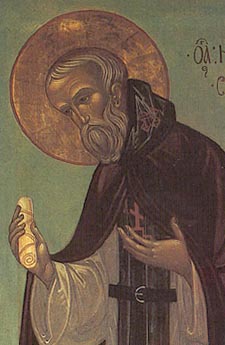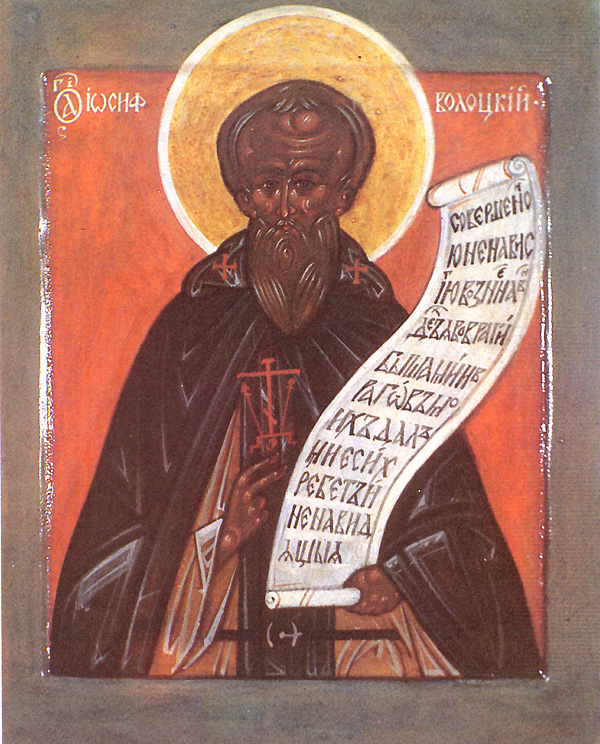Russia
The Rise of the Muscovite State
As the Byzantine Empire was falling to the Ottoman Turks, the seeds of the coming Russian Empire were taking root in Moscow. Saint Dimitry Donskoi was succeeded as Grand Prince of Moscow by three outstanding leaders in the 15th century: Basil I (or Vasili; r. 1389–1425), Basil II (r. 1425–1462), and Ivan III (r. 1462–1505).
These rulers were convinced that God had chosen them to lead the Russians in overthrowing the Tatar yoke, and in defending Orthodoxy. They moved cautiously and deliberately to consolidate and expand the power of the Muscovite state. Chiefly through diplomatic negotiations, leading to purchases and annexations, they gradually acquired authority over the neighboring towns and provinces. They, and probably the majority of the people, understood that a strong centralized political state was necessary to unite all the Russians in their resistance to the Tatars, and to protect the land from other enemies to the west.
In 1472 Grand Prince Ivan III married Sophia Paleologa, the niece of Emperor Constantine XI, the last of the Byzantine emperors. Now Ivan was directly connected with the last imperial dynasty of New Rome. He took as his coat of arms the Byzantine two-headed eagle.
In 1479 Ivan succeeded in incorporating the greatly important city-state of Novgorod near the Baltic Sea into the Muscovite state. The unification of the central and northern principalities was given a great boost by this annexation, but it came at a high price. For the Muscovites, suspicious of Novgorod’s active trading relations with Western Europe, closed down the city-state’s connections with the West. As Nicolas Zernov explains in The Russians and Their Church, “The door into Europe was shut, foreign trade came to a standstill, and the spirit of freedom and enterprise so prominently displayed by the people of Novgorod was extinguished.”
In 1480, the very next year, Ivan felt Russia was strong enough to stop paying the annual tribute money to the Tatars. In 1498, he was crowned by Metropolitan Simon of Moscow as “Tsar [Russian for ‘caesar’], Grand Prince and Autocrat of All the Russias.” The metropolitan charged him “to care for all souls and for all Orthodox Christendom.”
By now, all the elements were essentially in place for the ideology of Moscow as the “Third Rome.”
The Rise of the Possessors and the Non-Possessors
In 15th-century Russia, two quite different approaches to the monastic life, and to the relationship between the Church and the State, gradually took shape. The leaders of the two “parties”—both of whom shared the legacy of Saint Sergius of Radonezh, and both of whom are canonized saints of the Church—were Nil Sorsky (1433–1508) and Joseph of Volotsk (1439–1515).

Saint Nil (Nilus) led the party of the “Non-Possessors.” The monastics of this persuasion mostly lived beyond the Volga River, thus they were sometimes called the “Transvolgans.” Preferring the semi-eremitic life in small sketes, the Non-Possessors believed that monasteries should not own and rule over large estates. They held that the Church should be free from the direct influence and control of the State, and strongly opposed the right of the State to execute heretics. They defended poverty as the chief virtue, with humility and spiritual freedom pervading the contemplative, silent, and reclusive life of the monks. They were the inheritors of the mystical, hesychastic, and kenotic traditions of Saint Sergius and the anchorites of the Kievan Caves Monastery.

The “Possessors” were led by Saint Joseph. Hence, they were sometimes called the Josephites. Preferring large cenobitic monasteries, they believed that it was appropriate for monasteries to own large estates, including serfs, as this would provide income for building and maintaining their large establishments, as well as providing income to distribute to the poor. They held that the Church and State should be in close relationship, and that the Church should serve the social and political needs of the emerging Russian nation. They endorsed the right of the State to execute heretics. They emphasized a life of rigorous ascetic discipline and active social service among the people, which would be rooted in the strict observance of liturgical rituals.
In most of these tendencies the Possessors also followed the tradition of Saint Sergius. Both Saint Sergius and Metropolitan Alexis of Moscow had played a prominent role in Russian social and political life of the previous century—as seen especially in the vision and work of St Theodosius of the Kievan Caves Monastery.
Although the spirit of the Non-Possessors was never totally eliminated from the life of the Russian people, it was the way of the Possessors which would dominate Russian ecclesiastical and national development until the early 19th century.
